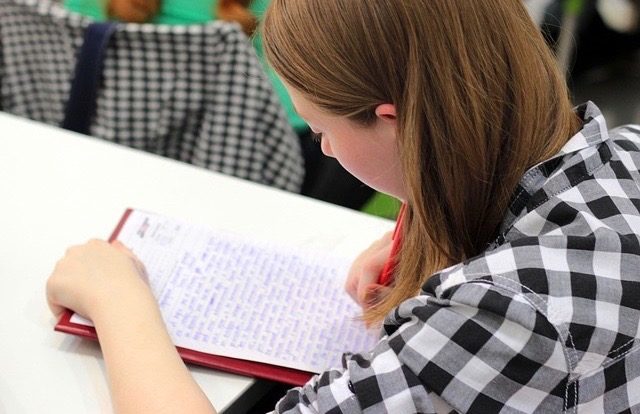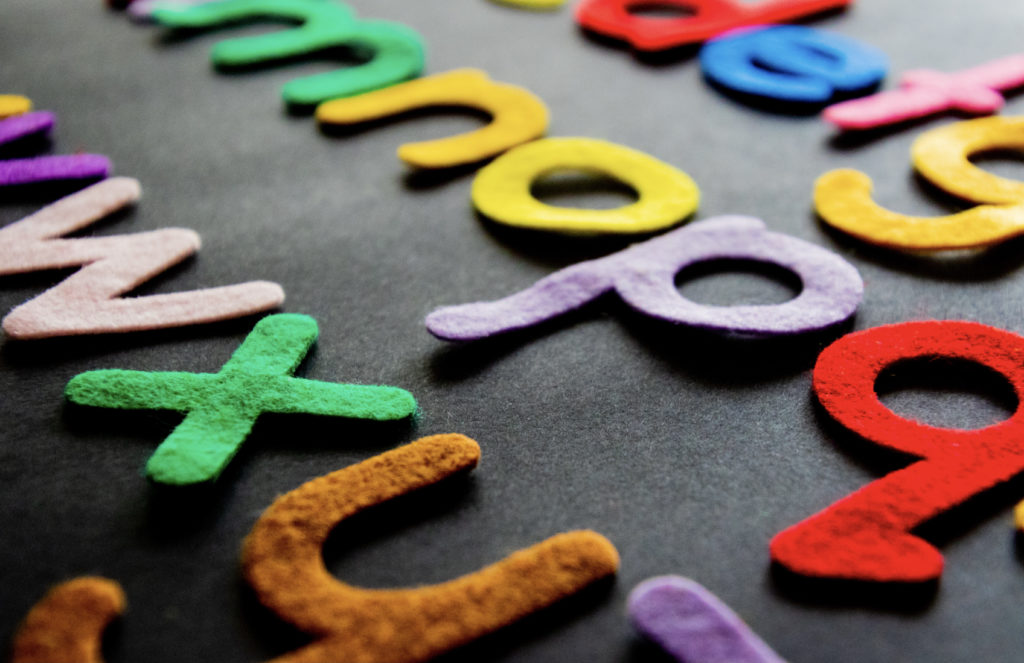This post is part of a series about helping students with LBLD experience academic success.
Read Erin’s other blog posts:
Working with Author’s Purpose
As testing season rapidly approaches, I’ve begun to target my focus on specific reading skills that come up often in standardized testing, but always with an eye on how I can use these skills to also improve my students’ writing. Reading and writing, of course, go hand in hand, so I have tried this year to look for opportunities to pair my instruction of each reading skill with some sort of parallel writing activity or assignment. For example, we recently reviewed author’s purpose – what it means and how to determine the purpose of a text. Many of my students were familiar with this concept once we reviewed it, and some even remembered the acronym P.I.E. (Persuade – Inform – Entertain), but a quick survey with short texts revealed that they often confused these concepts in practice. We spent time going over definitions of each, signal words that indicate different purposes, and examples. (For the examples, I asked the kids to come up with any topic – we settled on ice cream trucks – and we generated language you might find in texts about ice cream trucks that matched each purpose. Their ideas for entertainment were certainly, well, entertaining!)
To reinforce my students’ understanding of author’s purpose as a reading comprehension skill, I created a writing exercise. We read an article about therapy support dogs, and I told each student that they would be writing a short piece in their journals on the topic of therapy dogs. I passed out cards for “Persuade,” “Entertain,” and “Inform” and told students not to show anyone their purpose because it was to be top secret. (Picture this being said in a super-villain voice, for full effect…) Students then wrote their short pieces and shared them with the class, and the class had to guess their top secret purpose. As is often the case, I found that by actually writing, students really had to consider what their purpose was and how to convey this to their peers, which solidified the concept better than a million practice readings or MCAS packets ever could have.
Moving on to Text Structures
With the author’s purpose in mind, I moved on to looking at text structure and organization, considering how I could design lessons that relied as little as possible on MCAS packets and were reinforced with a writing activity. The goal, for me, is not just to have students understand standardized test questions or even to be able to apply skills to their independent reading, but also to be able to expand on their written vocabulary and toolkit to produce paragraphs of different types. I started with cause and effect because it seemed like a simple entry point into the idea that texts follow predictable patterns of organization and include signal words that can cue us into what that organization might be.
First, we did an introductory activity to talk about cause and effect, focusing on what each word means (some students still confuse them) and how you might determine which is a cause and which is an effect. I made sure to have space for my students to practice using cause and effect transition words, such as “as a result,” “consequently,” and even “because” and “so” in their sentences. For the next few days, I used cause and effect passages for our daily reading comprehension; for this activity, I like the Evan-Moor Daily Reading Comprehension workbook because the passages are short, followed by a few quick questions, and organized by skill. My student teacher and I also came up with a cause and effect manipulative activity where we gave the students cut-out phrases along with transition words and had them build their own cause/effect sentences. Some of their sentences got a little silly, but they had to make sure to use the transition words and then read the whole sentence out loud to make sure it made sense.
Introducing the Written Components
After we had completed these introductory activities, I began to introduce written components of text structure, knowing that my students now had a more solid foundation for understanding the difference between cause and effect and how to identify and recognize both in a reading passage or real life. I began by giving my students some practice in writing a simple cause and effect paragraph. In one example of this assignment type, I ask my students to practice using cause and effect transition words in writing for the first time by writing about a book we are currently reading. For example, my sixth graders have been reading Crossing the Wire by Will Hobbs, and so I asked them to write a paragraph about the events that caused Victor to end up back in Nogales a second time after he first crossed the border. The trick was that their paragraph had to include transition/signal words from our list indicating cause and effect; this was one of just several aspects on which they would be graded.
The second assignment was a longer, more in-depth reading and writing assignment that I completed with all students. In preparation for the MCAS, we do a lot of work with paired texts – how to read, analyze, and write about them. This assignment combined the work we’ve been doing on cause and effect structure with some paired text practice. We read two texts from the Scholastic Scope magazine related to plastic pollution. For this assignment, I asked students to highlight the causes of plastic pollution in one color and the effects of plastic pollution in another. Then, after we read the articles, I gave them a graphic organizer where they could record the main causes and effects of plastic pollution. We went over the organizer together, and I wrote all of their ideas on the board so that they could jot down some that they may have missed, as well as have a word bank to use in their writing assignment where words are spelled correctly. Their final assignment was to write a two-paragraph composition about the causes and effects of plastic pollution. The main skills I wanted them to focus on included the following: writing a topic sentence that includes the titles of both texts (as practice for the MCAS and in general as a skill they often struggle with), providing support and textual evidence for their details, and using at least three of our cause and effect transition words and phrases. These skills were highlighted both on the graphic organizer I provided and on the rubric that I gave them to self-assess before submitting a final draft.
Overall, I was happy with my students’ final products. They were able to write topic sentences that met the criteria I gave and use cause/effect transition words correctly in sentences and paragraphs. They could also recognize transition words in paragraphs while reading and use them to determine whether an event was a cause or an effect. By breaking down this type of paragraph in both reading and in writing, providing explicit instruction and practice, setting clear expectations, and providing models, I saw my students improve the quality and sophistication of their written language, as evidenced by these writing samples. In the past, I’ve taught my classes how to identify text organization, and we’ve covered how to write types of paragraphs. However, by pairing these reading and writing skills together and really focusing on the transition words that go with each type, students seemed to gain a deeper understanding that helped both their reading and writing skills and will hopefully contribute to a more natural understanding of how language functions in different paragraph types.



